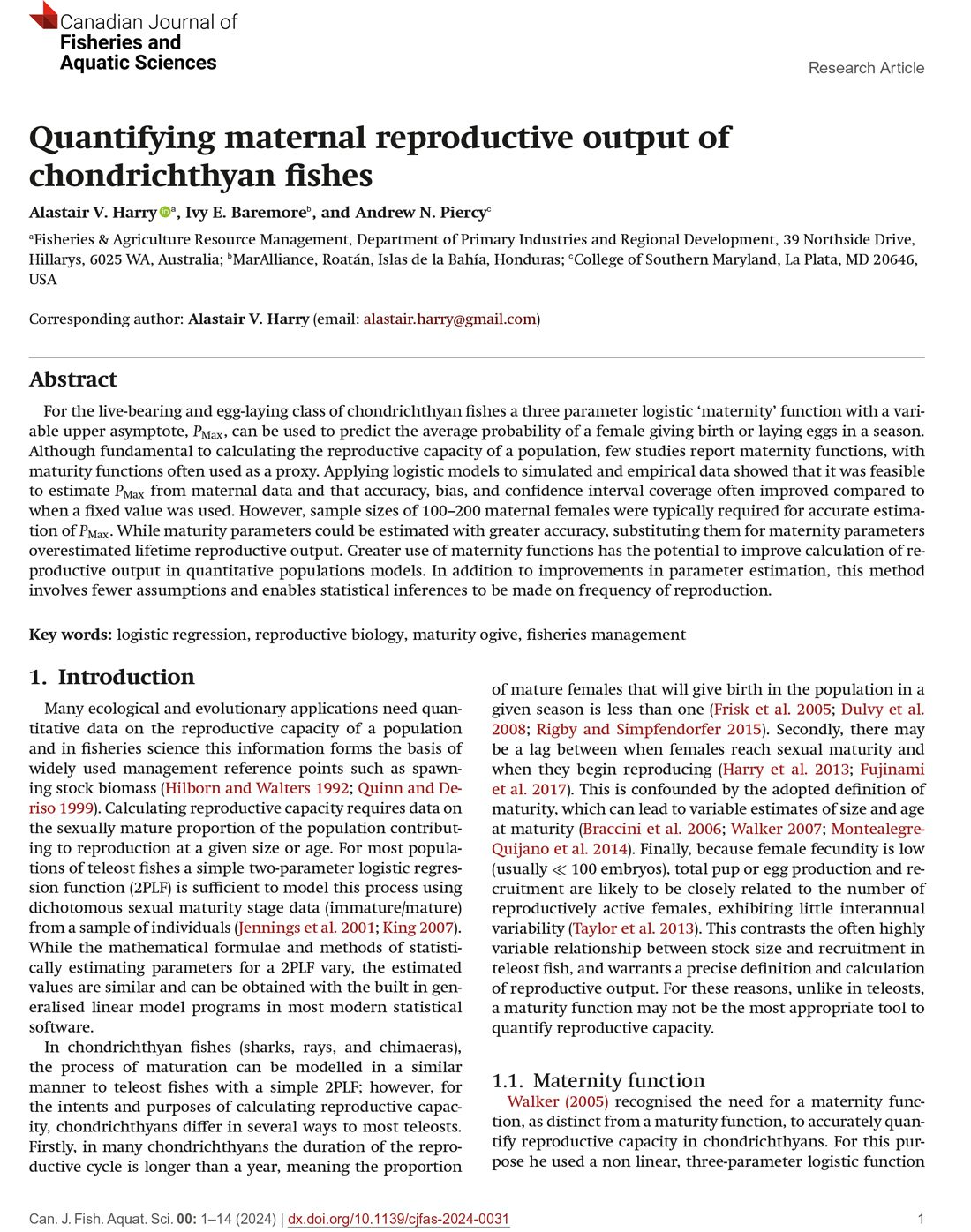For the live-bearing and egg-laying class of chondrichthyan fishes a three parameter logistic ‘maternity’ function with a variable upper asymptote, PMax, can be used to predict the average probability of a female giving birth or laying eggs in a season. Although fundamental to calculating the reproductive capacity of a population, few studies report maternity functions, with maturity functions often used as a proxy. Applying logistic models to simulated and empirical data showed that it was feasible to estimate PMax from maternal data and that accuracy, bias, and confidence interval coverage often improved compared to when a fixed value was used. However, sample sizes of 100–200 maternal females were typically required for accurate estimation of PMax.While maturity parameters could be estimated with greater accuracy, substituting them for maternity parameters overestimated lifetime reproductive output. Greater use of maternity functions has the potential to improve calculation of reproductive output in quantitative populations models. In addition to improvements in parameter estimation, this method involves fewer assumptions and enables statistical inferences to be made on frequency of reproduction.

